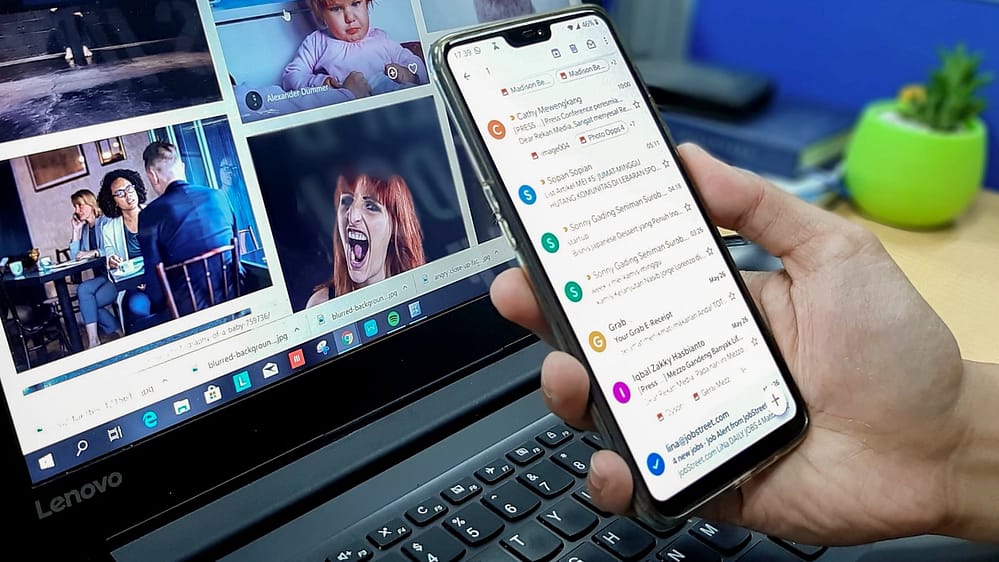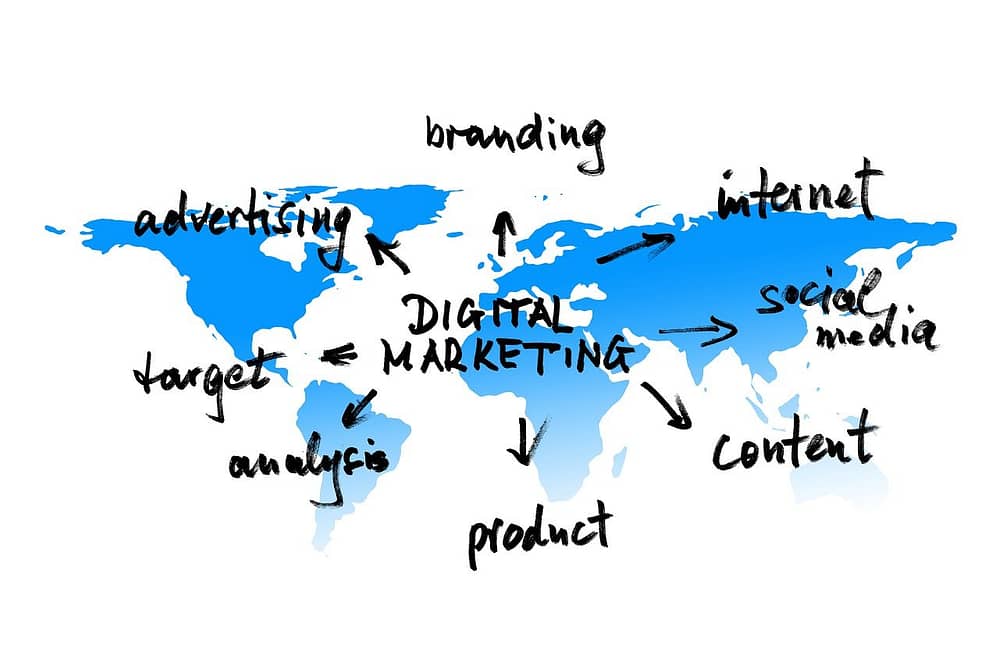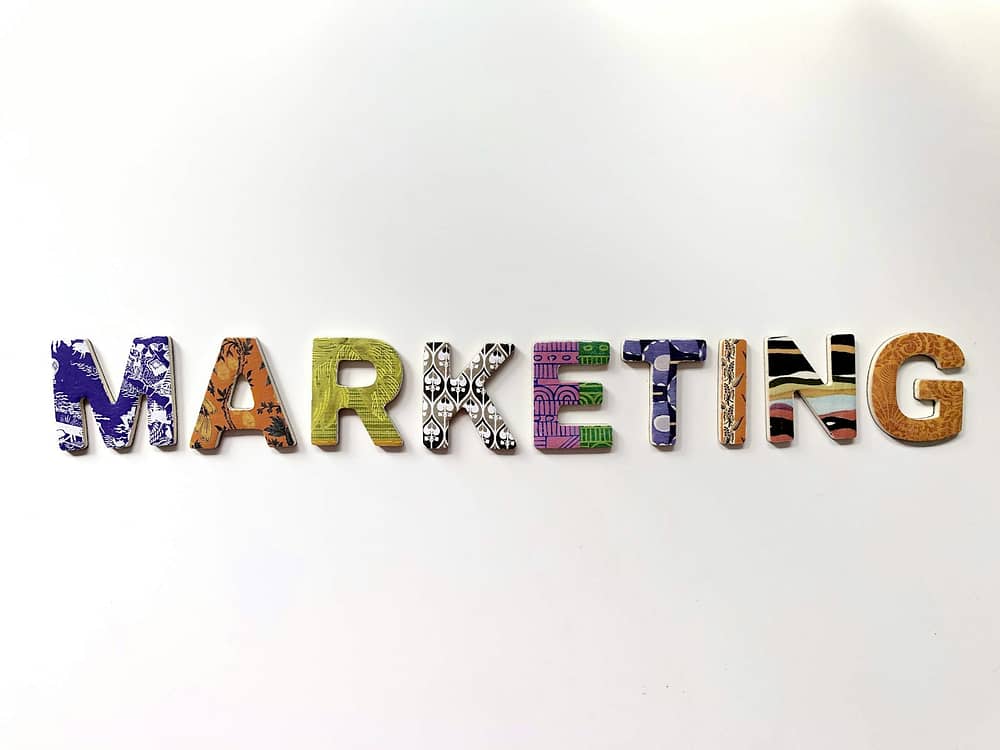Lead Generation: The Complete Guide to Turning Strangers into Customers (Online & Offline)
Table of Contents
Introduction: The Real Reason Your Business Needs Leads—The Lifeblood of Growth
Let’s be real—you can have the most amazing product, a stunning website, or the best customer service in the world… but without leads, your business is like a phone with no signal—silent and lifeless. It’s an engine with no fuel.
Leads are the lifeblood of every thriving business. They are more than just names in a database; they are potential customers—real people with real problems who show genuine interest in what you offer as a potential solution. Whether you run a local bakery, a specialized freelance service, an SaaS platform, or an online course, your ability to consistently attract, nurture, and convert these leads determines your ceiling for growth and long-term survival.
The good news? You don’t need to be a marketing wizard with an unlimited budget to generate high-quality leads. You just need a clear, empathetic strategy, the right tools, and a bit of creativity. Most importantly, you need to shift your focus from selling to helping. This comprehensive, in-depth guide is designed to give you exactly that framework, demystifying the process for businesses of any size.
What Is Lead Generation (and Why It Matters More Than Ever)
Lead generation is the strategic process of attracting and capturing the interest of a potential customer (a prospect) so you can eventually convert them into a paying client.
Think of it less like a transaction and more like a courtship or a professional networking process. You don’t ask for marriage on the first date, nor do you demand a sale the moment someone lands on your site. Instead, you build trust, share incredible value, demonstrate your expertise, and show them why you are the best partner (or solution) for their specific needs. Lead generation works the same way—it’s about earning attention and permission, not forcing sales or buying time.
The Imperative of Modern Lead Generation
In today’s hyper-competitive and noisy digital landscape, the power has shifted entirely to the consumer. People are bombarded with thousands of marketing messages daily. They actively block ads and ignore sales pitches. Therefore, interruption-based marketing has failed, and permission-based marketing (lead generation) is the only sustainable way forward.
When executed properly, a strong lead generation strategy helps you:
- Grow your owned assets (like your email list) and audience, giving you a direct line of communication free from social media algorithms.
- Build authentic relationships with future buyers based on value, not pressure.
- Increase your sales and revenue sustainably by focusing on quality leads who are a perfect fit.
- Strengthen brand awareness and authority in your niche, positioning you as the reliable expert.
So, how do you start generating leads effectively—using strategies that work both in the digital realm and the physical world? Let’s dive deep.
Chapter 1: Understanding the Types of Leads—The Buyer Journey
Before you allocate resources, it’s crucial to understand that not all leads are created equal. They exist at different points in their journey, requiring different approaches. Misidentifying a lead’s temperature is the quickest way to lose them.
1. Cold Leads (The Awareness Stage)
These are people who have just begun to recognize a problem but have never heard of you or your solution. They are in the initial research phase.
- Your Goal: To educate them about their problem and introduce your brand as a helpful resource.
- Typical Content: Blog posts, general guides, social media content (entertainment/inspiration).
2. Warm Leads (The Consideration Stage)
They have recognized their problem and are actively searching for solutions. They have interacted with your brand—maybe they downloaded your eBook, attended your webinar, followed you on social media, or visited your website multiple times. They are comparing you to competitors.
- Your Goal: To offer specific solutions, differentiate yourself, and build trust/credibility.
- Typical Content: Comparison guides, case studies, specific workshops, personalized email nurturing series.
3. Hot Leads (The Decision/Purchase Stage)
These are the golden leads—they are ready to buy. They have seen your offer, compared options, and just need a final, low-friction reason to choose you. They are actively seeking pricing, demos, or a consultation.
- Your Goal: To remove final barriers, provide proof, and make the buying process seamless.
- Typical Content: Free consultations, product demos, limited-time discounts, detailed pricing pages, and customer testimonials.
A smart, high-performing lead generation strategy is a well-oiled machine that helps move people from Cold → Warm → Hot using consistent communication and value delivered exactly when and how they need it.
Chapter 2: The Online Lead Generation Playbook—Attracting Digital Attention
The internet is where the vast majority of leads hang out today. Whether it’s through search engines, social media, blogs, or paid ads—the digital world offers unparalleled opportunities to attract new customers on a massive scale.
1. The Cornerstone: Creating Irresistible Lead Magnets (Valuable Content)
People are protective of their contact information. They won’t just hand over their email address for a simple “newsletter sign-up.” They exchange it for something perceived as highly valuable—this is your Lead Magnet. The best lead magnets solve a small, urgent problem for your ideal customer quickly.
High-Converting Lead Magnet Ideas:
- Templates & Checklists: A “Free Website Optimization Checklist” (for a web designer), a “30-Day Social Media Content Calendar Template” (for a marketing consultant). These offer instant utility.
- Mini-Courses/Webinars: A recorded 45-minute masterclass on a single, high-value topic (e.g., “The 5 Secrets to Retiring Early”).
- Calculators & Tools: An ROI calculator, a loan amortization schedule, or a free budget planner.
- Exclusive Discounts/Trials: A 15% off coupon on a first purchase, or a 14-day free, full-feature trial of your software.
- Resource Libraries: A curated list of the “Top 50 Tools for Remote Workers.”
Actionable Tip: If your lead magnet is generic, your leads will be, too. Make your lead magnet so specific that it repels the wrong people and magnetizes the right ones.
Once you capture those leads, the real work begins—nurturing them toward a sale. To master this essential step, read more on voob.com.ng/how-to-run-an-email-marketing-campaign to learn how to turn subscribers into devoted customers.
2. The Conversion Zone: Optimized Landing Pages and Forms
Your landing page is the single most important piece of real estate in your online lead generation strategy. It’s not your homepage; it’s a dedicated page with one job: conversion.
Key Elements of a High-Converting Landing Page:
- A Clear, Benefit-Driven Headline: Immediately tell the visitor what they will gain, not just what they will get (e.g., “Stop Guessing, Start Selling: Get the Free Checklist That Boosts Conversions by 25%”).
- Bullet-Point Benefits: Use scannable points to highlight the value proposition. Focus on results (e.g., “Save 10 hours a week,” “Avoid the #1 mistake”).
- Minimalist Design: Eliminate all distractions (like the main navigation menu). The only exit should be the form submission.
- A Short, Simple Form: The rule of thumb: Ask for the least amount of information necessary. For a free checklist, only ask for Name and Email. Asking for a phone number or company size is a high-friction request for a low-friction offer.
- A Strong, Urgent CTA (Call to Action): The button text must be compelling and reflect the offer (e.g., “Get My Free Guide Now” or “Send the Template to My Inbox”).
Tool Tip: Tools like ConvertKit, MailerLite, or HubSpot make creating professional, responsive landing pages easy with drag-and-drop builders—even if you’re not a tech expert. They often integrate seamlessly with the rest of your marketing stack.
3. Maximize Every Visitor: Website Optimization for Lead Capture
Most businesses spend 90% of their time driving traffic and only 10% optimizing for conversion. Don’t just focus on traffic—focus on conversion from that traffic. Every page on your site is a potential lead capture point.
Strategic Website Lead Capture Elements:
- Irresistible Popups: These can be controversial, but when used strategically (e.g., an exit-intent popup that only appears when a visitor is about to leave, or a timed popup after 30 seconds), they are extremely effective. The offer must be exceptional.
- Slide-in Forms: Less intrusive than a full-screen popup, these “slide” in from the bottom corner after a visitor scrolls halfway down a page, typically offering a lead magnet highly relevant to the page content.
- Sticky Bars (Hello Bars): A slim, persistent banner at the very top or bottom of the screen, staying visible as the visitor scrolls. Excellent for promoting high-priority, time-sensitive offers.
- Contextual CTAs: Embed a relevant, specific CTA button directly within the text of your blog posts or service pages.
- Chat Widgets and AI Chatbots: These invite visitors to ask questions instantly. A well-programmed chatbot can capture lead information (Name/Email) before passing the conversation to a human, ensuring 24/7 lead capture.
Your website should whisper one message loud and clear: “Let’s connect and see how I can help.”
4. Social Media as a High-Volume Lead Engine
Social media is not just for likes and entertainment—it’s a powerful lead generation engine if you use the right strategies. The goal is to get people off the platform and onto your owned asset (your email list).
Social Lead Generation Tactics:
- Instagram Stories & Reels: Use the “Link Sticker” feature in stories to direct viewers straight to your landing page. Create short, engaging content that teases the high-value lead magnet.
- Lead Forms in Ads: Both Facebook/Meta Ads and LinkedIn Ads have a “Lead Form” objective. These forms pre-populate with the user’s platform data, dramatically reducing friction and increasing conversion rates directly within the app.
- “Comment-to-Get” Mechanics: Share a post that sparks curiosity (e.g., “The single biggest mistake I made in business… Comment ‘YES’ to get my free post-mortem guide”). A tool can automatically DM the user the link, fostering engagement and a direct connection.
- Leverage Communities: Join relevant Facebook Groups, Reddit communities, or LinkedIn Groups. Offer real, non-promotional value by answering questions and sharing expertise before ever posting a link. Your authority naturally attracts leads.
Example: A fitness coach offering a “Free 5-Day Core Strength Challenge” via an Instagram story can collect hundreds of leads without paying a dime, provided the challenge sounds compelling enough to sign up for.
5. Email Marketing—The Nurturing Machine (The ROI King)
Once someone gives you their email, you have been granted permission to enter their inner circle. Do not ghost them. This is where the money is made—email consistently delivers the highest ROI of any digital marketing channel.
Building a Relationship with Email:
- The Welcome Sequence: The first 3-5 emails are the most important. They should deliver the lead magnet, introduce your brand story, set expectations (how often you’ll email), and offer quick wins or high-value advice. This sequence shifts the lead from Cold to Warm.
- Helpful Weekly Newsletters: Commit to consistency. Send newsletters that offer actionable advice, curated industry news, or personal insights. The key is to be a resource, not a sales flyer.
- Personalized Recommendations: Use segmentation to send highly relevant content. If a lead downloaded your SEO guide, send them a case study about a client who achieved massive SEO results.
- Exclusive Offers for Subscribers: Treat your email list like VIPs. Give them first access to new products, a deeper discount, or early bird registration for events.
The key to successful email marketing is consistency and care. You’re not just selling—you’re genuinely helping people make better decisions, and sales are the natural result of that help.
6. Paid Ads and Retargeting—Scaling Your Pipeline
When your organic strategy (content, SEO) is established and your sales funnel is converting, paid ads can fast-track your lead generation and allow you to scale predictably.
- Platform Choice: Choose based on your audience. Google Ads for high-intent leads searching for specific solutions (e.g., “best CRM software”). Meta Ads (Facebook/Instagram) for broad audience reach and discovery (interrupting their feed with a compelling offer). LinkedIn Ads for B2B leads (targeting by job title, company size, and industry).
- Offer Clarity: Paid ad creatives must clearly state the value of the lead magnet and the low cost of entry (email address).
- The Power of Retargeting: This is the secret weapon of smart marketers. Retargeting (or remarketing) ads bring back people who visited your site, engaged with a post, or added a product to their cart but didn’t take action. Since they already know your brand, these ads have a significantly lower Cost Per Acquisition (CPA).
A Gentle Reminder: Sometimes, a gentle retargeting ad is all it takes to convert a “maybe” into a definitive “yes.” They needed a nudge, not a full pitch.
Chapter 3: Offline Lead Generation That Still Works—The Power of Human Connection
Even in our aggressively digital world, offline lead generation is far from dead. In fact, for local or service-based businesses, a well-executed offline strategy can build deeper trust and relationships than any online ad.
1. Networking and Events—The Face-to-Face Advantage
The most powerful form of marketing is still human-to-human.
- Strategic Attendance: Attend local business events, workshops, trade shows, and industry conferences. Don’t just show up—have a clear goal.
- The Follow-Up: The fortune is in the follow-up. Collect business cards, and within 24 hours, send a personalized email mentioning something specific you discussed. This moves the offline connection into your online lead nurturing sequence.
- The Elevator Pitch: Have a compelling, non-salesy pitch ready. It should describe the problem you solve, not just what you do (e.g., instead of “I’m an accountant,” say “I help small business owners stop losing 20% of their profits to bad bookkeeping”).
Remember—people buy from people they trust and like.
2. Referrals and Word-of-Mouth—The Trust Multiplier
Nothing beats trust built through real, positive experiences. A referral lead is often a hot lead because the trust has been transferred from the referrer to you.
- Establish a Formal Program: Don’t just hope for referrals; ask for them. Offer incentives like discounts, free maintenance, or gift cards for every successful referral.
- Simple Ask: After a happy customer review or testimonial, simply ask, “Who else do you know who could benefit from this?”
- Strategic Partnerships: Partner with non-competing businesses that serve the same ideal customer (e.g., a wedding photographer partnering with a local florist).
3. Community Involvement and Local Authority
When you genuinely contribute to your local community, you build a massive amount of goodwill and trust that instantly translates to business.
- Host Seminars: Host a free “Lunch & Learn” seminar at your office or a local library on a high-value topic (e.g., “How to Secure Your Home from Cyber Threats”). Collect registrations (leads) at the door.
- Sponsorship & Charity: Sponsor a local youth sports team, join a charity drive, or offer pro-bono services to a local non-profit. When people see your brand actively helping, they’re more likely to remember and trust you when they need your service.
4. Smart Use of Print—Bridging the Gap
Traditional print marketing still works, but it needs a digital bridge.
- Include a QR Code: On all flyers, posters, and local ads (even business cards), include a high-visibility QR code. This code should not go to your generic homepage. It should lead directly to a specific landing page with a compelling offer (e.g., “Scan for a Free Estimate” or “Scan to Get 10% Off Your First Order”). This turns offline interest into an online, trackable lead instantly.
Chapter 4: The Secret Ingredient—Nurturing Your Leads to Conversion
Generating a lead is only the first step. The real win, the factor that separates the highly successful businesses from the mediocre ones, comes from nurturing them—guiding them gently, step-by-step, toward making a confident purchase decision. Most businesses give up after 1-2 follow-ups, but it takes an average of 7-13 touches to generate a qualified sales lead.
Advanced Lead Nurturing Strategies:
- Hyper-Segmentation: Go beyond just segmenting by name. Segment your list by their interests (which lead magnet they downloaded), their behavior (which pages they visited), or their stage (cold, warm, or hot). Send content specific to their segment.
- The Power of Storytelling: Use emails to share customer success stories, personal anecdotes, or the “why” behind your business. Storytelling builds a powerful emotional connection that facts and features cannot.
- Problem-Solution Bridging: Structure your follow-up emails to acknowledge the problem (e.g., “You downloaded our guide because you’re struggling with X…”) and then offer the solution that leads directly to your paid product or service.
- Call-to-Value, Not Call-to-Sale: Every touchpoint should deliver value. Instead of immediately pitching your product, try: “Ready to boost your traffic? Here are the Top 5 SEO Mistakes to Avoid” or “Need help implementing this? Let’s talk!” This consultative approach builds long-term loyalty.
This approach turns a fleeting interest into genuine, long-term loyalty.
Chapter 5: Essential Tools to Make Lead Generation Easier
You don’t have to do it all manually. The right tech stack can automate repetitive tasks, ensure timely follow-up, and help you analyze performance, allowing you to focus on the human element of relationships.
- CRM & Lead Management: HubSpot, Zoho CRM, or Pipedrive. These are non-negotiable. They act as the central database, tracking every interaction, touchpoint, and conversion, allowing your sales team to know exactly where a lead stands.
- Email Automation: MailerLite, ConvertKit, ActiveCampaign. These tools allow you to build complex welcome sequences, segment your audience, and schedule personalized broadcast emails.
- Landing Pages: Leadpages, Carrd, Systeme.io. Dedicated landing page builders often outperform generic website pages because they are specifically designed for high-conversion efficiency.
- Analytics & Behavior Tracking: Google Analytics, Hotjar (for visual heatmap tracking). These tools tell you where visitors are dropping off on your landing pages, allowing for constant testing and improvement.
- Chatbots & Live Chat: Tidio, ManyChat. These tools ensure that every visitor who has a question can be instantly qualified and captured as a lead, even outside of business hours.
Use these tools to automate the process so you can focus on what truly matters—the human relationships that drive long-term value.
Chapter 6: Common Lead Generation Mistakes to Avoid—Protecting Your Pipeline
Even seasoned marketers slip up. Avoiding these common pitfalls will save you massive time, budget, and frustration:
- ❌ Buying Email Lists: Never, ever buy an email list. These are cold, low-quality contacts that will kill your email deliverability, damage your sender reputation, and result in immediate unsubscribes.
- ❌ Ignoring Mobile Optimization: Over 60% of web traffic is mobile. If your landing pages or email forms don’t look perfect and load instantly on a phone, you are hemorrhaging leads.
- ❌ Focusing Only on Traffic, Not Conversion: A landing page with 10,000 visitors and a 1% conversion rate is worse than a page with 1,000 visitors and a 20% conversion rate. Prioritize optimizing the funnel over boosting the traffic.
- ❌ Overcomplicating Your Offer: Don’t offer a 100-page ebook as a lead magnet. Keep it simple, specific, and instantly gratifying (e.g., a “5-Minute Checklist”).
- ❌ Forgetting to Follow Up Quickly: The quicker you follow up with a warm lead (especially B2B), the higher the chance of conversion. A slow response often means losing the lead to a faster competitor.
Remember: Simple, consistent, and valuable always wins the long game in lead generation.
Chapter 7: Measuring Success—What Really Matters in Lead Generation
Don’t just collect leads; analyze what’s truly working. Tracking the right metrics allows you to stop guessing and start making data-driven decisions that fine-tune your strategy for maximum ROI.
Key Performance Indicators (KPIs) to Track:
Conversion Rate (CVR): The percentage of visitors who complete the desired action (Visitor $\rightarrow$ Lead). This is the health metric of your landing page. Formula: (Total Leads / Total Visitors) x 100
Cost Per Lead (CPL): The total amount spent on a campaign divided by the number of leads generated. This is critical for paid ad campaigns.
Email Open and Click-Through Rates (OR/CTR): These indicate how engaged your leads are with your nurturing efforts. Low rates signal a need to improve subject lines, segmentation, or content relevance.
Lead-to-Customer Ratio: The percentage of captured leads that ultimately turn into paying customers. This is the ultimate metric for funnel profitability.
Time-to-Conversion: How long, on average, it takes a lead to move from initial capture to a sale. A faster time allows for more aggressive scaling.
These numbers help you fine-tune your strategy, kill underperforming campaigns, and get a better, more predictas (Online & Offline)
Conclusion: Turn Attention into Opportunity—The Future is Generosity
Lead generation, at its core, isn’t about chasing people or deploying complex, manipulative tactics. It’s about attracting them with real, undeniable value and establishing a reputation as a trustworthy partner.
Every blog post, every social media comment, every flyer, ad, or email is a chance to show that you care, you understand your audience’s pain points, and you have the expertise to solve them.
Start small, test often, be generous with your knowledge, and stay relentlessly consistent.
Remember: You don’t need millions of general visitors. You just need the right people—and a clear, empathetic plan to nurture them through the journey. Your next high-value customer is already out there, reading this right now, waiting for you to show up and offer them the help they truly need.
Q&A: Lead Generation FAQ (Your Quick Answers)
Q1: How long does it take to see results from lead generation?
A: It depends on your methods. Organic strategies (like SEO or blogging) may take 3-6 months to build momentum, while paid ads can deliver leads in days. The key metric is consistency—the longer you execute your strategy, the faster and better the results become.
Q2: What’s the absolute cheapest way to get leads?
A: The cheapest way is through organic content and community building. Offer a highly valuable freebie (like a checklist, calculator, or mini-guide) on your social media channels or website. Promote it organically by answering questions in community groups and subtly positioning your free solution as the next step.
Q3: How many leads do I need to make a sale?
A: That depends entirely on your conversion rate. A typical conversion rate from lead to sale is between 1% and 5%. If you sell a high-ticket service with a 10% closing rate, then 100 high-quality leads could mean 10 sales. The focus should be on quality leads over quantity.
Q4: Should I use automation for lead generation?
A: Absolutely, yes. Automation tools (CRMs, email sequences) save massive amounts of time and ensure you follow up with every single lead faster and more reliably than a human can. Just make sure your communication still feels personalized and authentic.
Q5: What’s the best type of lead magnet?
A: The best lead magnet is anything that solves an urgent problem for your ideal customer quickly and instantly. Top performers are templates, checklists, calculators, or simple guides that give instant, measurable value.
Hi, I’m Prince Stephen Mordi, the mind behind Voob.com.ng. I write simple, beginner-friendly guides on tech, blogging, and making money online. My goal is to help you navigate the internet without headaches—because tech doesn’t have to be complicated!





